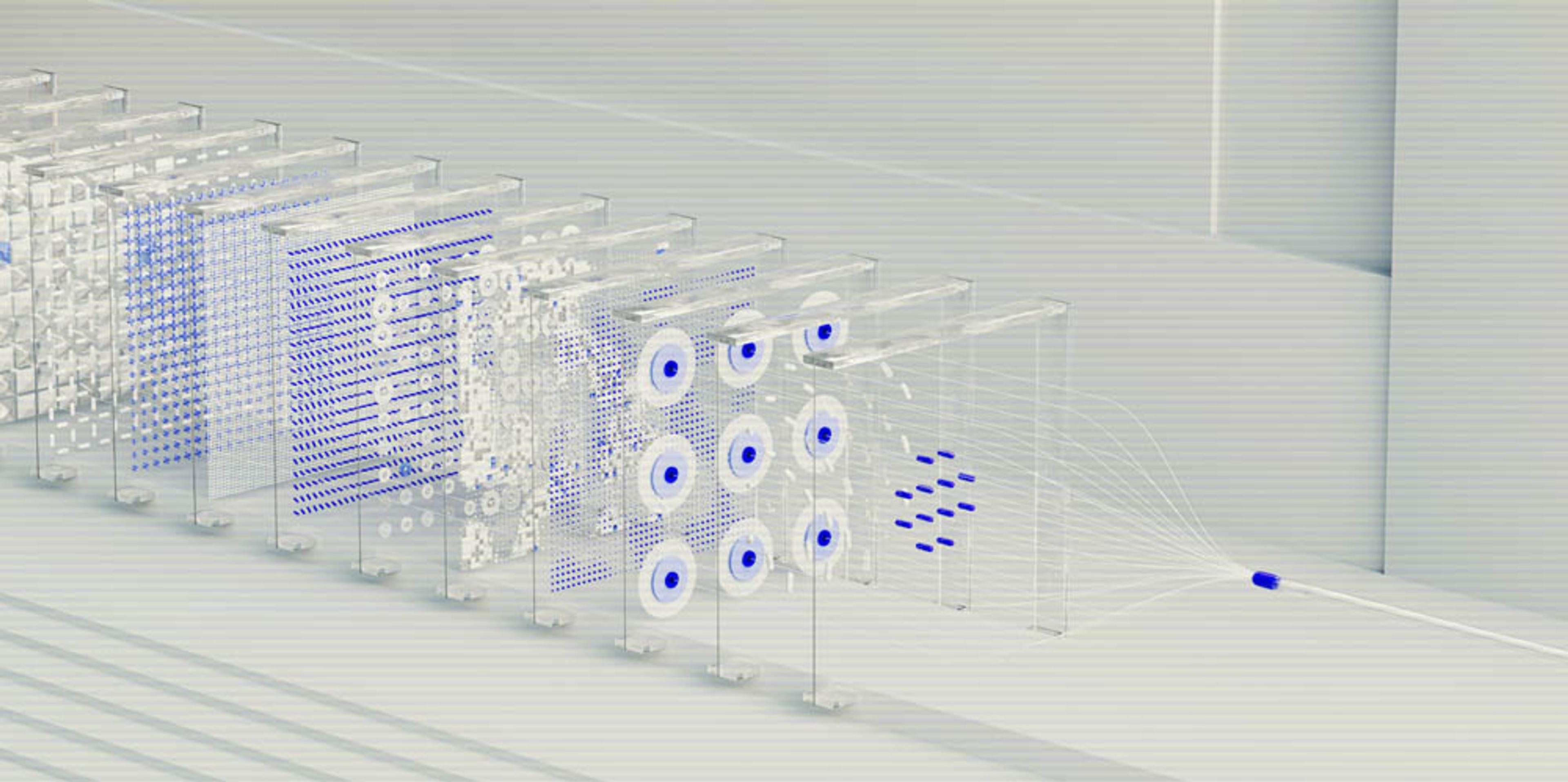
AI has found its way into every nook and cranny of the business world a lot faster than most people and business analysis expected. From customer service chatbots and sales support to personalized recommendations and fraud detection, technology has become the lifeline of modern businesses. Thanks to AI powering smarter decisions and faster responses, many business operations and logistics now run smoothly around the clock. But this is not all AI has to offer companies.
Currently, there is one area in which AI is quietly making a massive impact: IT operations.
IT operations is one of the most complex, critical, and resource-intensive functions within any organization. From maintaining servers, connecting networks, to monitoring applications and ensuring systems are secure, available, and performing optimally, IT operations are the invisible force keeping the business engine running. In fact, businesses rely heavily on IT systems to stay connected, and as they scale, so does the complexity of their IT infrastructure. This is where AIOps comes in.
AIOps, short for Artificial Intelligence for IT Operations , is one of the most significant innovations in enterprise technology in recent years. It brings the power of machine learning, data analytics, and automation to the heart of IT systems. In this article, we break down how AIOps is gaining so much attention, why it is becoming a necessity, and why companies need to adopt it.
What is AIOps?
First coined by Research Firm Gartner in 2016, AIOps, or Artificial Intelligence for IT Operations, combines AI-driven insights and analytics with traditional IT operations. In many ways, it is similar to how DevOps (Development and Operations) brought together development and IT teams to improve software delivery. AIOps, on the other hand, is all about transforming how companies manage, maintain, and maximize their IT operations. AIOps is changing the game when it comes to collecting, analyzing, and acting on large volumes of data.
With the use of advanced technologies like machine learning, big data analysis, and automation, AIOps helps companies maintain uptime, respond to incidents, and keep systems running smoothly at scale.
Why Do Companies Need AIOps?

Now, to the big and perhaps the most important question asked by many: Why do companies need AIOps?
1- Proactive Issue Detection and Resolution
One thing companies cannot afford is downtime or slow responses. It is safe to say that experiencing downtime or lag is the same as losing customers and money, even if it happens for a few minutes. In today's digitally fast-paced world, customers expect apps and services to work instantly - metaphorically, at the speed of light. Anything short of that, and they move on.
Even with modern and up-to-date monitoring tools in place, the reality is that IT-related alerts only come in after something breaks. By that time, customers are already affected, and the brand has taken a hit. This is one area where AIOps takes the lead in. It detects issues, unusual behavior patterns, such as a server gradually running out of memory, and recommends actions or automatically fixes the issue before it escalates.
To put it simply, AIOps reduces Mean Time to Detect (MTTD) and Mean Time to Resolve (MTTR), allowing businesses to stay always-on.
2- Saves Time by Automating Routine Tasks
In the business world, time equals money, and that is why time is always well accounted for. It is a resource that cannot be replenished, so how it is spent matters. Repetitive tasks like performance monitoring, log analysis, manually sifting through data, and responding to every minor glitch take up valuable time. More often than not, they keep IT teams stuck in a cycle of firefighting rather than focusing on strategic improvement. It is important to note that doing the same thing over and over again, even if it is their job, can be demoralizing.
Over time, it leads to burnout, lower job satisfaction, and a drop in productivity, which negatively affects the company. AIOps helps solve this by automating routine and repetitive tasks. It takes the manual load off the IT professionals, freeing up their time to tackle higher-level problems and come up with solutions to improve the overall operation of the company.
3- Boost Better Customer Experience
At the heartbeat of every thriving business is a series of impressed customers. By detecting and resolving issues in real time, AIOps helps ensure that customers rarely feel the impact of technical problems. More importantly, AIOps allows companies to be proactive, not just reactive. It does not wait for complaints to roll in; it identifies potential issues before they become customer-facing problems.
With AIOps, your company can maintain uptime, experience less customer frustration, and build trust with your customers. This level of operational stability is not just a nice-to-have; it is a business necessity.
4- Reduces Alert Fatigue
Ask any IT engineer, and they will tell you, dealing with constant alerts is exhausting. Many alerts are false positives or duplicates, and they bury the real problems under a mountain of noise. AIOps tools reduce this burden by using machine learning to filter, correlate, and prioritize alerts. Instead of hundreds of meaningless alerts, the system may generate just one or two meaningful incidents that need human attention.
5- Staying Competitive
Companies that thrive are the ones that adapt, innovate, and deliver a flawless user experience. Aside from that, the integration and use of trending AI-powered tools and systems in the company's operations give it a clear competitive edge. It should go without saying that today's business environment moves fast.
If your competitors are using AIOps to detect issues, optimize performance, and maximize their IT operations, and you are not, you are already behind. This is not a case of "do as they do," rather, it is a case of doing what is necessary to stay relevant and boost your company.
6- AIOps and Infrastructure
In today’s fast-paced digital environment, traditional IT operations are often overwhelmed by the scale and complexity of modern systems. This is where AIOps plays a transformative role by reshaping how IT infrastructure is monitored and managed.
AIOps tools are capable of ingesting vast amounts of logs, metrics, and event data to perform real-time anomaly detection, allowing them to identify unusual behavior across servers, applications, and networks before these irregularities escalate into incidents.
These platforms also support root cause analysis by using machine learning algorithms to correlate data from multiple sources across the tech stack, significantly reducing the time it takes to pinpoint and resolve issues - a key factor in minimizing system downtime and maintaining performance.
Furthermore, automated remediation is a defining feature of advanced AIOps platforms, which can automatically execute predefined scripts or trigger workflows to resolve routine problems, such as restarting failed services or scaling infrastructure resources during high-demand periods.
Finally, AIOps excels in predictive analytics, where it leverages historical data to forecast potential performance bottlenecks, storage limitations, or even emerging security threats. This enables IT teams to act proactively rather than reactively, ensuring that infrastructure remains resilient, efficient, and aligned with business demands.
7- Infrastructure Change Needed for AI
As companies increasingly integrate AI into core business functions; from real-time customer service automation to large-scale data analytics, the underlying IT infrastructure must evolve to meet these heightened demands. One of the most critical shifts is the need for real-time data processing, as AI models rely on high-speed data pipelines and low-latency environments to function effectively and make timely decisions.
In parallel with this, scalability and elasticity have become essential, as AI workloads are often unpredictable and resource-intensive, especially during training and inference. Cloud-native infrastructure that can automatically scale up or down based on demand is now a necessity, not a luxury. Additionally, the growing complexity of modern architectures (including microservices, edge computing, and hybrid environments) requires increased observability to maintain visibility across all systems. AIOps platforms are key enablers in this area, providing unified monitoring and insights that help IT teams manage this complexity with greater efficiency.
On the security front, AI adoption also introduces new vulnerabilities and expands the attack surface, making an enhanced security posture critical. AIOps can integrate with cybersecurity tools to detect anomalies and flag potential threats before they cause damage.
Moreover, to keep pace with the data processing needs of AI, many organizations are finding that faster and more advanced databases and database servers are required. Legacy systems often lack the speed, throughput, and flexibility needed to support AI workloads, pushing teams toward modern solutions like in-memory databases, distributed SQL engines, or GPU-accelerated systems that can handle the data velocity AI demands.

The Skepticism of Companies around AIOps Adoption
Despite the growing interest in AIOps, there is still a level of skepticism among many companies, especially when it comes to fully integrating AI into core operations . While many companies are already using AI-powered tools, they are often more hesitant to fully integrate their IT operations with automated systems. The skepticism and caution are understandable. Entrusting AI with essential operational functions for your company can feel risky, especially with the reports of false positives, data management challenges, and uptime and security on the line.
However, there is one thing to note: AI enhances, not undermines. It takes care of the hard-to-tackle tasks and leaves the rest to you. It breaks down the complexities of your IT operations into simpler bits to boost your productivity and competitive level in the business world. AIOps is not without its challenges, but so is every modern or traditional tool used in the business.
This should not be a reason to hold back on one of the best AI-driven insights your company needs.
Are AIOps Replacing Humans?
Not at all.
AIOps is not about replacing IT professionals; instead, it is about empowering them. In fact, one of the biggest strengths of AIOps is its ability to work alongside humans. The AI learns from IT teams’ past decisions, and teams can train it to align with business rules and policies. So instead of being a threat, AIOps actually makes IT operations in companies more effective, more agile, and more valuable.
Conclusion: AIOps as the Future of Intelligent IT Operations

AIOps is far more than a passing tech trend - it represents a fundamental shift in how organizations approach performance, reliability, and innovation within their IT operations. As traditional systems struggle to keep up with the growing scale and complexity of today’s digital environments, AIOps steps in to transform infrastructure monitoring and management. Through capabilities like real-time anomaly detection, machine-learning-powered root cause analysis, automated remediation, and predictive analytics, AIOps empowers IT teams to be proactive rather than reactive, ensuring systems stay resilient, efficient, and aligned with business goals.
At the same time, the increasing integration of AI across business functions is driving major changes in infrastructure requirements. From the need for high-speed, low-latency data pipelines to the demand for scalable, cloud-native environments, modern IT ecosystems must evolve to support AI workloads. Greater observability, stronger security measures, and more advanced databases and database servers are now essential components of any forward-thinking IT strategy. AIOps not only helps manage this complexity—it enables companies to thrive in it.
In short, AIOps is becoming a cornerstone of modern IT infrastructure, unlocking new levels of efficiency, scalability, and intelligence. The organizations that embrace this evolution will be better positioned to deliver superior digital experiences, reduce operational risk, and stay competitive in an AI-driven world. The question isn’t whether AIOps will redefine IT operations—it already is. The real question is: Will your company evolve with it, or be left behind?
ScreamingBox provides world class development for AI, Web and Mobile, as well as being able to bring our clients the latest DevOps and AIOps technologies and engineers. Please CONTACT US if you wish to discuss how we can help your business grow and how to implement the best AI and AI infrastructure development.
Check out our Podcast on the related subject of TeamOps .
ScreamingBox's digital product experts are ready to help you grow. What are you building now?
ScreamingBox provides quick turn-around and turnkey digital product development by leveraging the power of remote developers, designers, and strategists. We are able to deliver the scalability and flexibility of a digital agency while maintaining the competitive cost, friendliness and accountability of a freelancer. Efficient Pricing, High Quality and Senior Level Experience is the ScreamingBox result. Let's discuss how we can help with your development needs, please fill out the form below and we will contact you to set-up a call.